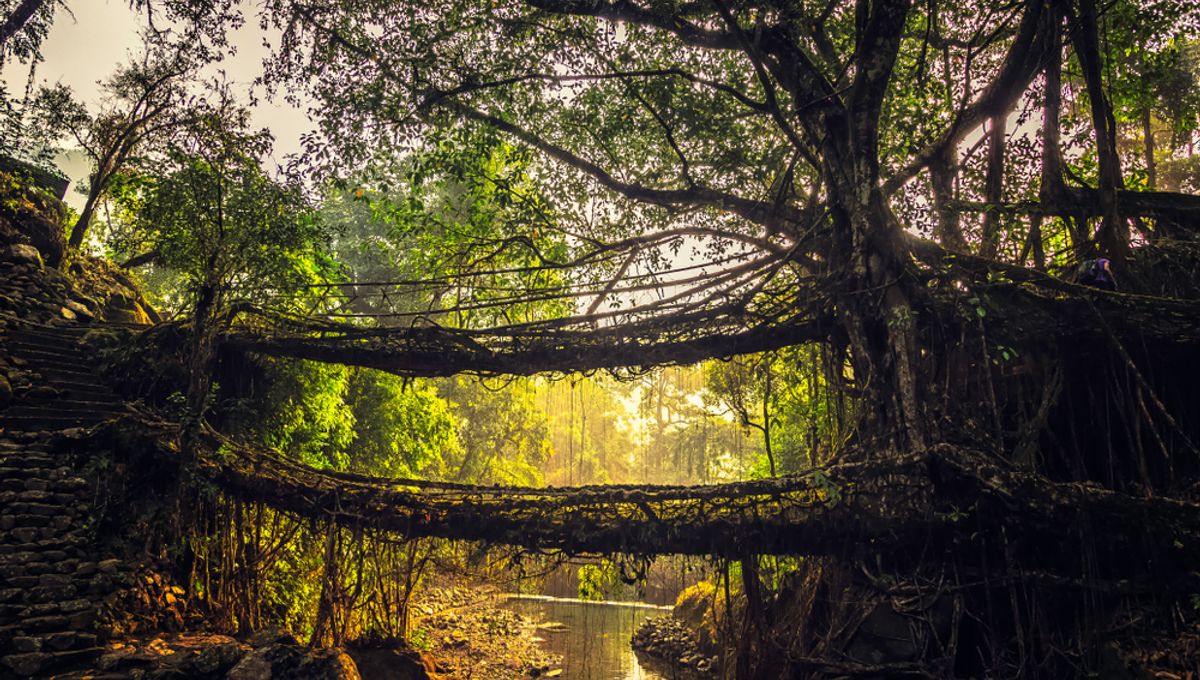
This article first appeared in Issue 9 of our free digital magazine CURIOUS.
Jungle living can be treacherous, and if The Never Ending Story taught us anything it’s that horses and wet floors don’t go well together. In the jungles of Meghalaya in Northeast India, the Indigenous Khasi and Jaintia tribal communities have come up with an artful solution to getting around by manipulating trees to form living root bridges.
Known locally as the Jingkieng Jri, each bridge represents decades of hard human labor that sees tree routes manipulated to grow over bamboo scaffolding. The roots of rubber trees (Ficus elastica) are teased out to make the bridges, which are incredibly strong, being able to hold around 50 humans and even people on horseback.
In 2022, the Jingkieng Jri were added to UNESCO’s “tentative list” marking the first step towards having the living root bridges considered for World Heritage Status. UNESCO celebrated the skill that goes into making each bridge, describing them as a “profound harmony between humans and nature”.
Subscribe to our newsletter and get every issue of CURIOUS delivered to your inbox free each month.
The ingenious and sustainable solution to infrastructure has subsequently connected over 75 remote villages in one of the wettest regions on Earth. Meghalaya is home to the village of Mawsynram, said to be the world’s rainiest place. To overcome the threat posed by swelling rivers in monsoon conditions, the Indigenous tribal communities created the living root bridges as a way of safely getting around.
The use of root inosculation blends living material to create lasting bridges that can tolerate the turbulent weather conditions Meghalaya enjoys and that other human-made structures might crumble under. As living structures, any damage the bridges incur can be repaired and actually sees the bridges grow stronger over time.
Research has shown the remarkable diversity that goes into creating Jingkieng Jri, with different approaches being employed to create ladders, platforms, towers, and even erosion/landslide prevention structures. And to top it all off, the rubber trees also provide waterproofing for local communities as they secrete latex.
“Besides playing a critical socio-economic role within each village, Ficus-based Living structures also contribute to the ecology through forest and riparian restoration,” UNESCO said. “The Indigenous community, including traditional farmers and hunters, continue to use and nurture these structures, reinforcing the remarkable spirit of their ancestors.”
CURIOUS magazine is a digital magazine from IFLScience featuring interviews, experts, deep dives, fun facts, news, book excerpts, and much more. Issue 12 is out now.
Source Link: India’s Ingenious Living Root Bridges